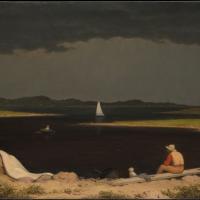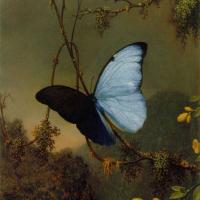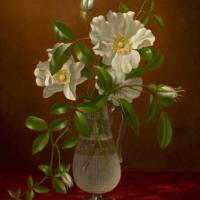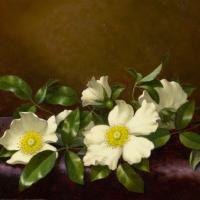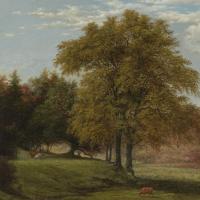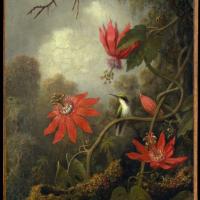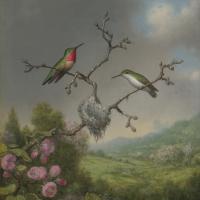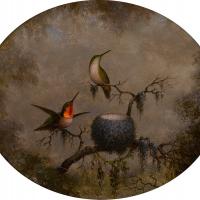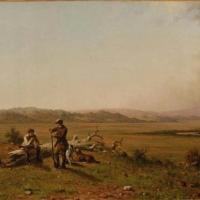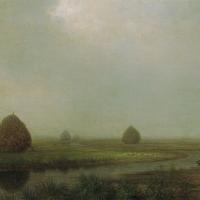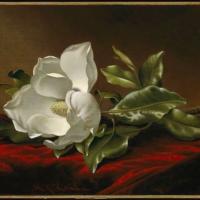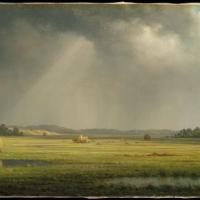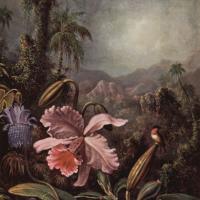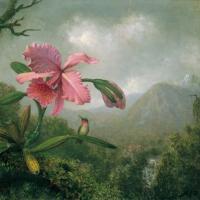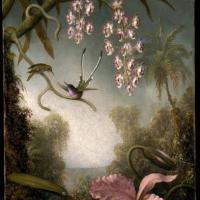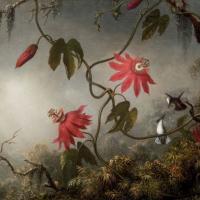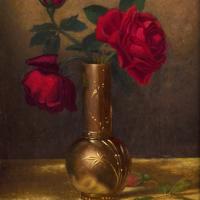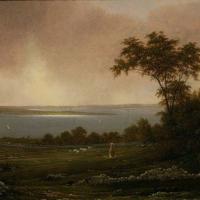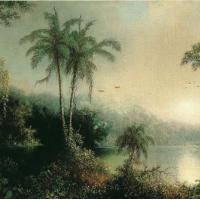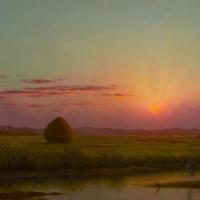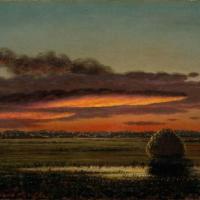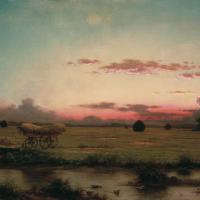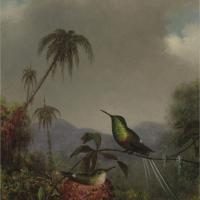Martin Johnson Heade
Approaching Thunder Storm
$450.00
Blue Morpho Butterfly Atc
$450.00
Cows In A Landscape
$450.00
Hummingbirds And Their Nest
$450.00
Hunters Resting
$450.00
Jersey Marshes
$450.00
Magnolia Grandiflora
$450.00
Newburyport Meadows
$450.00
Orchid And Hummingbird
$450.00
Rhode Island Landscape
$450.00
Singing Beach
$450.00
Sunrise In Nicaragua
$450.00
Sunset Over The Marsh
$450.00
Sunset Over The Marshes
$450.00
The Marshes At Rhode Island
$450.00
Martin Johnson Heade
Martin Johnson Heade (1819-1904)
Martin Johnson Heade (August 11, 1819 – September 4, 1904) was an American painter known for his salt marsh landscapes, seascapes, and depictions of tropical birds (such as hummingbirds), as well as lotus blossoms and other still lifes. His painting style and subject matter, while derived from the romanticism of the time, are regarded by art historians as a significant departure from those of his peers.
Heade was born in Lumberville, Pennsylvania, the son of a storekeeper. He studied with Edward Hicks, and possibly with Thomas Hicks. His earliest works were produced during the 1840s and were chiefly portraits. He travelled to Europe several times as a young man, became an itinerant artist on American shores, and exhibited in Philadelphia in 1841 and New York in 1843. Friendships with artists of the Hudson River School led to an interest in landscape art. In 1863, he planned to publish a volume of Brazilian hummingbirds and tropical flowers, but the project was eventually abandoned. He travelled to the tropics several times thereafter, and continued to paint birds and flowers. Heade married in 1883 and moved to St. Augustine, Florida. His chief works from this period were Floridian landscapes and flowers, particularly magnolias laid upon velvet cloth. He died in 1904. His best known works are depictions of light and shadow upon the salt marshes of New England.
Heade was not a widely known artist during his lifetime, but his work attracted the notice of scholars, art historians, and collectors during the 1940s. He quickly became recognized as a major American artist. Although often considered a Hudson River School artist, some critics and scholars take exception to this categorization. Heade's works are now in major museums and collections. His paintings are occasionally discovered in unlikely places such as garage sales and flea markets.
Theodore Stebbins, Jr., now curator of American art at the Harvard University Art Museums, writes, "...one of the things that has always made the study of Heade's work exciting is the way his paintings continue to turn up in garage sales and other unlikely places all over the country, in a manner that the paintings of Frederic E. Church and John F. Kensett do not." Stebbins speculates the reason for this was Heade's popularity with middle-class buyers, and his willingness to distribute his works widely across the country. Among the more spectactular Heade discoveries are:
Thunderstorm on Narragansett Bay, now in the collection of the Amon Carter Museum of American Art, Fort Worth, Texas, was originally discovered in an antiques store in Larchmont, New York, in 1943 by NYC art dealer Victor Spark.
Magnolia Blossoms on Blue Velvet and Cherokee Roses, now in private collections, were purchased at an estate sale in Arizona for $60 in 1996. They sold at Christie's auction house later that year for $937,500 and $134,500 respectively.
Two Magnolias on Blue Plush was originally purchased for $29 at a rummage sale by a Wisconsin man in 1989. It sold at Christie's auction house in 1999 for $882,500. It is now in the collection of James W. McGlothlin of Bristol, Virginia.
Magnolias on Gold Velvet Cloth was used to cover a hole in the wall of an Indiana resident for years. The owner became curious about the value of the painting after playing an art-related board game, and verified its authenticity with a New York art gallery. The Museum of Fine Arts in Houston purchased the work for $1,250,000 in 1999.
An unnamed Heade salt marsh landscape now titled "River Scene" was discovered in the attic of a Boston-area resident in 2003. It sold at a local auction house to an art dealer for $1,006,250 and was featured on the PBS television show, "Find!". It was purchased by a private collector, and is now on view at the Fogg Art Museum in Cambridge, Massachusetts.
In 2004 a Florida woman was informed of the Heade discovery featured on "Find!" by her son, and inquired about a small 6 by 12 inch landscape that had hung in her living room. The painting, which her late husband had purchased for several dollars in St. Augustine in the 1970s, was authenticated as a late Heade marsh landscape. It sold at auction to an art dealer for $218,500.
A painting was found in a Massachusetts attic in 2006 and consigned to a local auction in Fall River. The painting was authenticated by Dr. Theodore Stebbins, Jr., as a Heade, having been p


